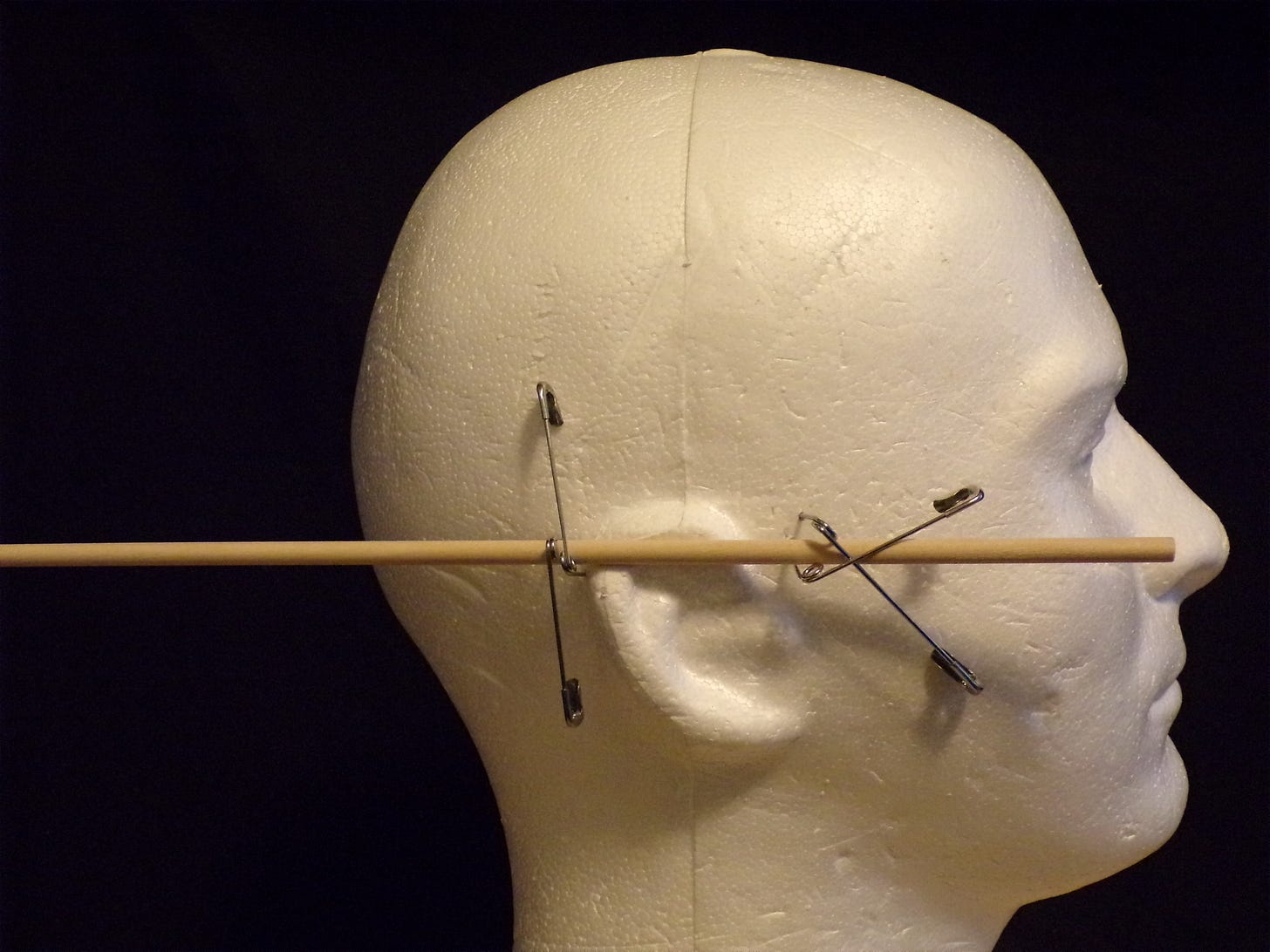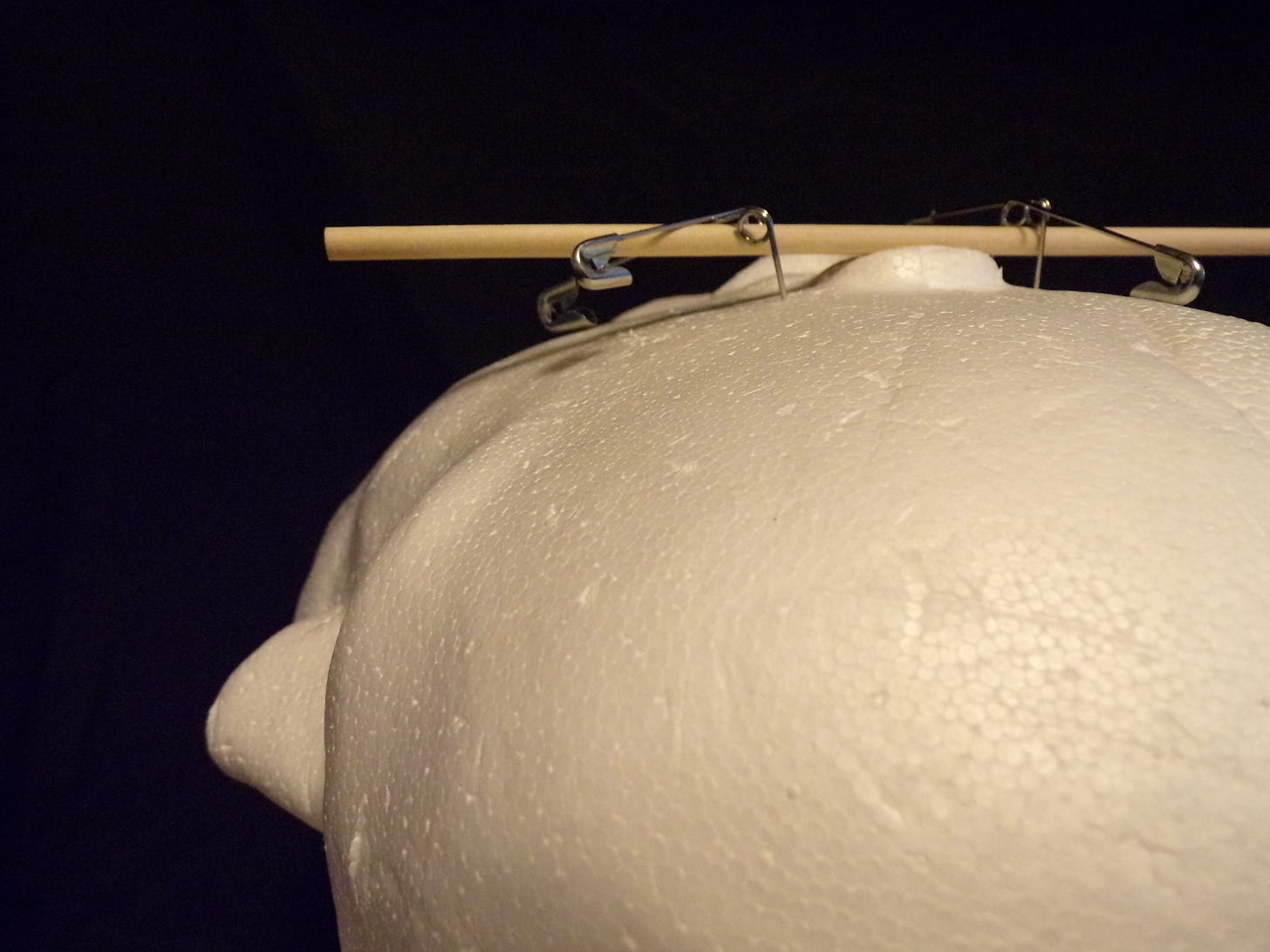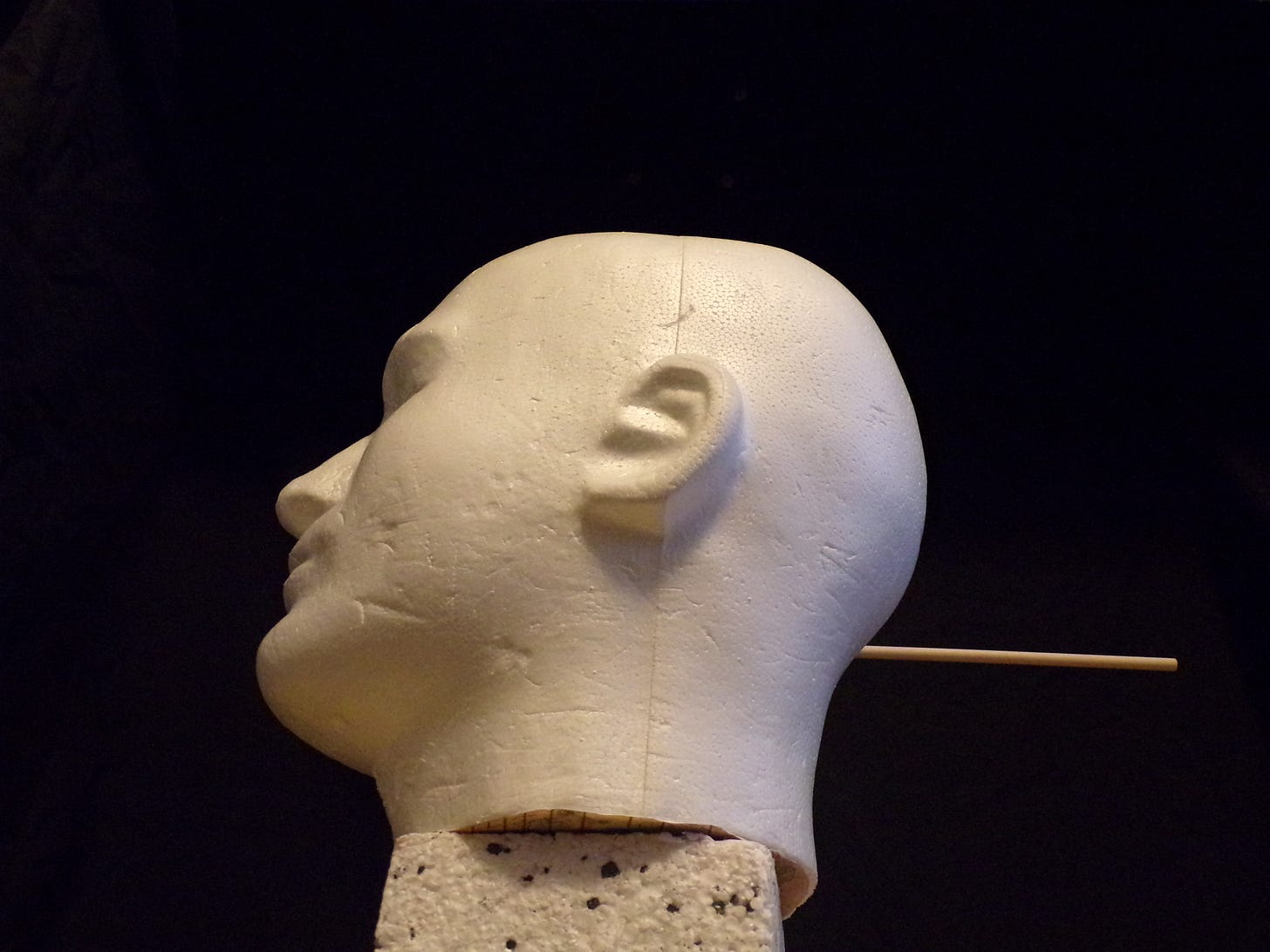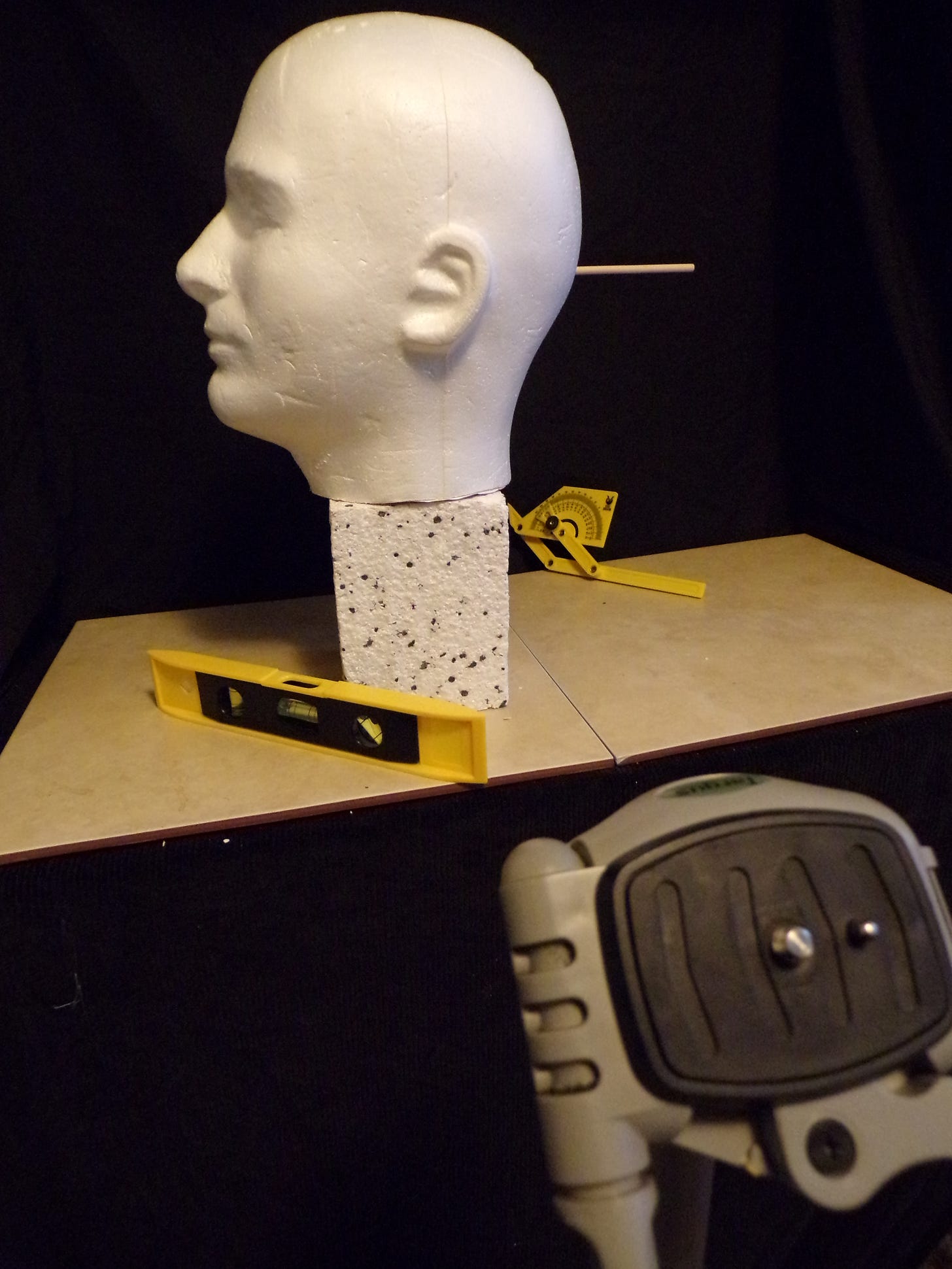Updated: Vapor Trail Explanation Added; Head Tilt Considered: The Second Bullet Captured in Doug Mill's Photograph of the Shooting of Former President Trump
A Forensic Analysis from Video, Audio and Physical Modeling [Edited typos, 2024-07-15; Addendum 2024-07-17: Body Tilt Analysis; 2024-07-18: Vapor Trail]
CONCLUSION
The image of a presumed bullet captured in a photograph of the shooting of Former President—and now Presidential Candidate—Donald Trump, as well as the killing of one bystander and the critical wounding of two others was that of the second projectile fired.
SUMMARY ARGUMENT
In the video with link provided below, the first shot, assumed from the direction, or the general direction, of the shooter identified as Thomas Matthew Crooks, 20, can be heard at minute 06:58.
In the photograph by Doug Mills, the photographer from the New York Times, Former President Trump is already raising his right arm in reaction to being struck in the right ear by the first shot, thus the presumptive image of the projectile passing beyond the rear of the head is that of the second bullet. Please see Figure 1.
The position of the right arm in the Mills photograph roughly corresponds to that captured in the video supplied below at minute 06:59. Please see Figure 2. I was only able to progress through the video by 19 to 20 increments per second (one second equals 1,000 milliseconds) of this particular video—-that is, I was able to step through the critical portions of the video in increments of approximately 50 milliseconds). This is as close as I was able to approach the same arm position as that in the photograph by Mr. Mills.
The muzzle velocity of an AR-15, probably similar to the weapon used by Mr. Crooks, is 3,200 to 3,500 feet per second (fps). After only passage through the roughly 450 feet between the shooting position of Mr. Crooks and the former President, this velocity will not have been appreciably diminished. Thus, the time of flight from the ear of Mr. Trump to approximately one to two feet behind his head will be less than roughly 0.3 milliseconds.
In the dynamic video, I count approximately 0.7 seconds, or 700 milliseconds, between the audio trace of the bullet and Mr. Trump’s reaction positioning his hand closer to his face—as seen in the video as he reaches for his ear and captured in a still shot by Mr. Mills. At this point in time, the bullet that struck Mr. Trump’s ear could have been down range from Mr. Trump by approximately 2,200 feet to 2,400 feet, or roughly one half of a mile, had it not likely stuck another victim. To reiterate, the presumptive bullet caught by Mr. Mill’s camera could not have been the first bullet which struck Mr. Trump’s ear.
There is another sound of a bullet audible as Mr. Trump’s hand is in this position, it is the second sound of a projectile.
There is a third sound of a bullet as Mr. Trump begins his protective, guarding crumple.
A physical modeling of the trajectory of the bullet that struck Mr. Trump is demonstrated in the photographs that I prepared this morning. Mr. Mill’s, in the interview he provided to ABC News and which is available in my immediately previous posted, and which is available at the link immediately below, describes himself in the “buffer zone” and describes himself as “looking up.” Without further information, we cannot ascertain at present exactly how close Mr. Mill’s was to Mr. Trump at the moment of the shooting. What is definitive is that the background in the photograph is the blue sky, not the crowd. This fixes Mr. Mill’s camera position below the position of Mr. Trump’s head.
The parallax effect resulting from Mr. Mill’s position could account for some of the apparent position of the streak of a bullet in Mr. Mill’s photograph, though it appears to me that the bullet which grazed the former President’s head would have been too close to present itself apparently emerging from behind the head at the level of the nape of the neck. Please see Figures 3, 4 and, especially 5. The image in the latter, though positioning the line of trajectory at a reasonably approximate position along the nape of the neck, [requires] too low of a camera angle. Notice that too much of the underside of Mr. Trump’s chin is visible. Also, as indicated in the caption of the photo, the level of emergence is too far below the bottom of the right ear. Notice as well that Mr. Mill’s photograph captures the former President’s head at a level much more even with the horizontal, mid-coronal section of the head. (Please forgive, once again, the brief use of anatomical terminology.)
[Addendum 2024-07-17] Pease see Figure 6. This image shows the tilt of the President’s body away from the vertical and, thus, away from the path of at least the first two bullets, including the photographed bullet. The combination of lateral flexion to the right of the torso and the neck produced a head tilt of 23°. In factoring the effect of parallax, this argues for a placement of the path of the second bullet even further from the right ear and the side of Mr. Trump’s head.
The only possibility for reconciling a bullet streak at that position on the neck in the photograph by Mr. Mills, the argued position of the trajectory from the anatomical geometry of a bullet damaging the ear, the timing of the audible event of a bullet sound correlated with the reactive position of Mr. Trump’s hand and the speed of a bullet, is that the photographically recorded streak is that of the second bullet at a distance of probably [updated 2024-07-17] a̶ f̶e̶w̶ t̶o̶ even more than several inches to the right of Mr. Trump’s head.
It is my concluding conviction based on image that the streak of a bullet captured by Mr. Mill’s was deviated some distance to the right and away from Mr. Trump’s head. This corresponds to the incontrovertible conclusion that Mr. Trump had already been hit once by the first bullet. Thus, the first shot fired by Mr. Crooks in pursuance of his evil intent, as would be expected, was the most accurate in terms of its most certainly-presumed target being that of Mr. Trump’s head.
This study is in no way intended to diminish the significance and historical importance of the event that Doug Mills captured. He is to be complimented on this product of a photographer’s skill, experience and effort. It is an iconic photograph for all time.
It is likely that the ballistics investigators have already determined these facts. This is hoped to provide the public with clarity regarding how to refer to the image of the streak of the bullet captured in Doug Mill’s photograph. It could also assist, or be a model for, the public in evaluating hypotheses of other shooters in other positions, angles or distances (such as behind that of Mr. Crook’s position), especially if combined with the use of audio analysis software.
Figure 1, above. This is the historical and powerful image of the streak of a presumed bullet flying past the head of the Former President.
Figure 2, above. This is the screen capture of Mr. Trump with arm raised to approximate the position seen in Mr. Mill’s photograph. Note the background here is that of the spectating crowd. In Mr. Mill’s photograph, the sky forms the background because of Mr. Mill’s camera position below the level of Mr. Trump’s head.
Figure 3, above. This is an image of a model of a head made of Styrofoam, to which is a wooden dowel rod is attached with safety pins. In this lateral view from the right, the dowel rod, as indicator of the estimated path of the bullet that struck the former President’s right ear, transits through a portion of the top of the ear.
Figure 4, above. Here is a superior view of the model of the head seen in Figure 3 with the dowel rod pressed slightly into the Styrofoam of the representative ear and parallel to the sagittal plane of the head. (Please forgive the brief use of anatomical terminology.)
Figure 5, above. Photograph of model showing the emergence of the indicator of the trajectory of the bullet from behind the head at a position in the nape of the neck roughly corresponding to the position along the nape of the neck in the photograph in Figure 1. Achieving this point of emergence required a camera angle 37 degrees below the horizontal to the head. This did not even to take into account the [tilt] of Mr. Trump’s torso to the left and the lateral slight tilt of his head to the left as well. Note that this position emerging from the nape of the neck places the level of emergence well below the bottom of left ear.
Figure 6, above. A combination of left, lateral flexion of torso and neck produced a measured 23°tilt of Mr. Trump’s head from the vertical, away from the path of the first first bullet and the second (photographed) bullet. Image source: https://x.com/i/status/1813623626790490286.
Figure 7, above. Materials for the study of estimated bullet trajectory through the top of the right ear and the apparent level of emergence from the back of the head at various camera angles.
ADDENDUM
[Added 08-08-2024] Doug Mills, the Photographer Who Captured the Speeding Bullet








